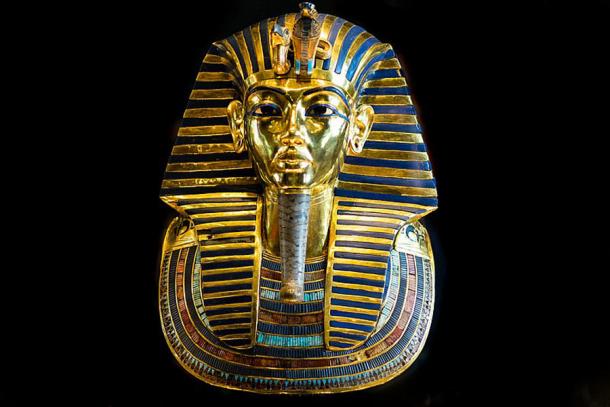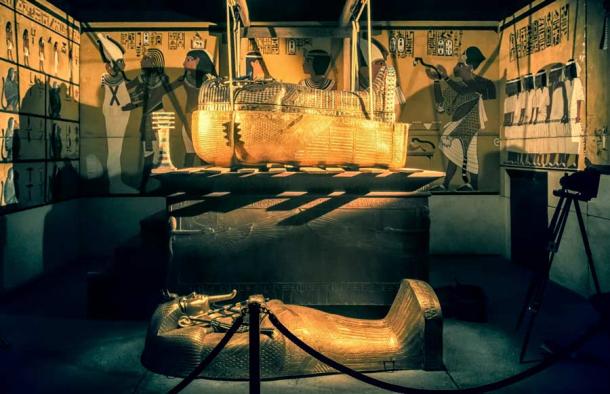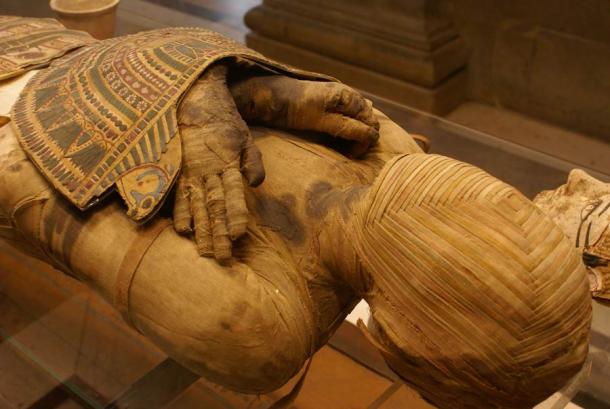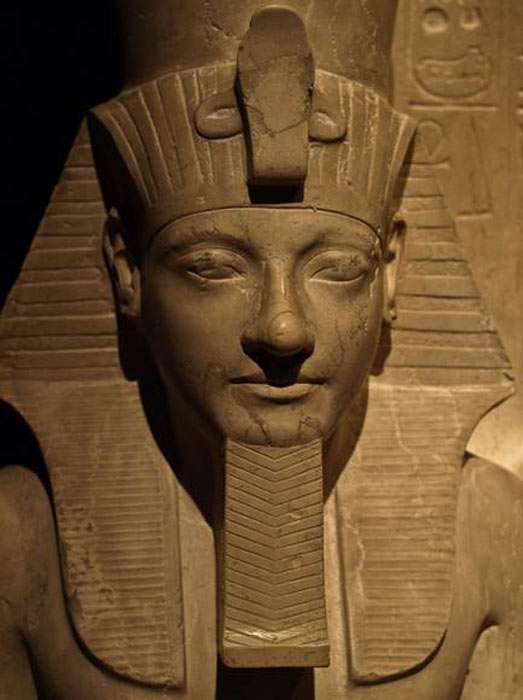
5 Unique Facts Straight Out of Ancient Egypt
A lot of things viewed as unusual by the people from the present day used to take place in ancient Egypt. While some of these aspects are fascinating, others can be simply regarded as odd. Going beyond this, ancient Egypt has proven to be a fantastic civilization which continues to inspire individuals even today. Out of the countless lesser-known aspects regarding ancient Egypt, some interesting ones are revealed here.
1. World's First Known Female Pharaoh
Ancient Egypt gave the world the first female pharaoh who is still known in the present day. Her name was Merneith. She lived around 5000 years ago, belonging to the First Dynasty. She died around 2950 BC, after ascending to the throne once her husband, Pharaoh Djet, died. The son of the couple, Den, should have become pharaoh, but he was too young. So, around 2990 BC, his mother's reign began. Merneith (who had royal blood, being a descendant of Pharaoh Narmer who had unified Egypt and started the First Dynasty in the past) took care of state matters. Even though not much is really known about her, one thing remains certain: during her administration the ancient Egyptian economy thrived and, later on, thanks to his mother's guidance, Den came to be regarded as the greatest pharaoh of the First Dynasty.
The tomb of the female pharaoh was discovered at Abydos. It was very unusual for the tomb of a woman, being identical to other tombs that had been constructed for great male pharaohs. It included 40 sacrificed servants, many sacrificed animals, and a boat on which the soul of the female pharaoh could sail in the afterlife to meet the Sun god, Ra. In this way, Merneith set the ground for other great female pharaohs who are probably a little more well-known such as Hatshepsut and Cleopatra. However, the reality of female pharaohs is not the only fascinating and lesser-known fact about ancient Egypt. So, let the adventure into the old world of gods and mummies begin!
2. Tutankhamun’s Beard
In ancient Egypt, having hair on one's body was seen as dirty and a sign one was lacking in personal hygiene. Because of this, both men and women shaved off all the hair from their bodies. This included shaving their heads. After doing this, women would wear beautifully adorned wigs with complex designs according to the fashion of the times. In the case of the pharaoh, the beard was a symbol of masculinity and power. But, obviously, the pharaoh could not grow a beard because hair on the body implied uncleanliness. So, an artificial beard would be attached to the pharaoh's face using strings to keep it in place. The funerary gold mask of Pharaoh Tutankhamun presents an example of such a beard.
- Mathematics of the Pharaohs: The Rhind Papyrus and Ancient Egyptian Math
- Analyzing Mummy Genes: Were Ancient Egyptians closely Related to Middle Easterners?
In the case of the discovery of Tutankhamun's tomb, Carter and his team had not been the best archaeologists. Instead, they were much closer to the image of treasure hunters. As a result, while handling the solid gold funerary mask they managed to break off the beard. Unable to use the same method applied by the ancient Egyptians who had crafted the mask, around the year 1944 the beard was fixed back onto the mask using a piece of wood. That was how the relic was displayed until August 2014 when the beard was accidentally broken off again by some Egyptian employees from the museum. Obviously, these museographers realized the gravity of the situation, so they decided to hide their mistake by gluing the beard back on using adhesive. To make it look even better, they removed the visible remains of the adhesive substance by using some metal tools to scrape them off. Ultimately, the mask ended up looking really bad.
To fix the relic, a restoration commission from Germany showed up. They worked for nine weeks just to remove the adhesive substance. They masked the scratches and reattached the beard using beeswax, the exact substance that had originally been used in this regard by the ancient Egyptians. The eight museographers, including the museum's director, were sent to trial and they will have to pay a large fine.

The famous burial mask of King Tutankhamun on display at the Egyptian Museum in Cairo, Egypt (CC by SA 2.0)
3. Tomb Raiding
On the 24th of November 1922, Howard Carter discovered the tomb of Pharaoh Tutankhamun. This was thought to have been sealed and untouched, the only tomb of an ancient Egyptian pharaoh that had escaped the action of tomb raiders. Wrong!
Carter understood that others had entered the place before him. Officially, he promised that the tomb would only be unsealed and opened in the presence of Egyptian officials. So, of course, he illegally entered the tomb the night before the grand event. This was no big deal, because others had been there before him, twice actually. The proof of this was a large crack in the exterior door. This had been sealed back up. Also, the pharaoh's belongings from the antechamber were found in disorder, as the tomb raiders had robbed the place in haste. This had happened shortly after the pharaoh's burial. These thieves had been interested in jewelry and precious metal items. Also, they had come for the things which had to be stolen immediately. This refers to perfumes, precious oils, and clothing items. These could not last for years inside the tomb, so if the thieves wanted to sell them for profit, they had to remove them quickly.
Other cracks on the doors of the tomb clearly suggested the second tomb raiding event. The first grave robbers had only broken into the antechamber. The second ones had a larger team and they had been better organized. Their purpose was to access all of the funerary chambers. There was a written inventory detailing everything that had been placed inside the tomb. Carter discovered it. After consulting it, he understood that, in 1922, less than half off all the jewelry and precious metal items originally deposited inside the tomb had remained. This suggests that the tomb raiders had to get out of there quickly, only taking what they could carry.
Not even the seal on the tomb had been the original one. Instead, this had been replaced by the one of Horemheb. This pharaoh had received the throne from Ay (the vizier who had succeeded Pharaoh Tutankhamun). To hide all of this, repairs were made, and the cracks were covered. However, everything had to be done in great haste due to the lack of time, just as the tomb raiders had previously operated. After the second grave robbing event, the tombs of Ramesses II and Ramesses IV were built close to the tomb of Tutankhamun. Tutankhamun was thought to lack importance as a pharaoh, so his tomb no longer attracted interest. Also, the entry to the tomb was covered by sand and, in time, the place was forgotten. The grave robbers switched their attention towards the tombs of other more important pharaohs which had more to offer.

The tomb of Tutankhamun. Source: Jaroslav Moravcik / Adobe Stock
4. The Cost of Mummification
A lot has been discussed about the process of mummification and its stages. However, fewer people have knowledge regarding the costs of this process. It is obvious that nobody got mummified for free in ancient Egypt. Also, it must be mentioned that ancient Egyptians did not use money. The first coins from the area were introduced around 360 BC, but, despite this, ancient Egyptian priests were highly aware of the value of luxury goods and precious metals. These priests were actually the inventors of the mummification business. Their purpose was to obtain profit, as every person had to be mummified after death if he or she wanted to even have an afterlife.
According to Herodotus, Egyptian priests had come up with three main types of mummification. The first was meant for the rich who had to pay what would be equal to about 20,000 euros today for a premium mummification process. The brain was taken out through the nose, the corpse was eviscerated, bathed in expensive wines, spices and oils, kept with salt for around 70 days, the eyes were replaced with two onions and the organs were nicely placed in specialized canopic jars. After the corpse dried up, it would be wrapped in expensive cloth along with specific amulets and sealed with wax and resin. The mummy was given to the family who also had to pay for a sarcophagus, a pyramid or a tomb, some slaves to kill for the mummy to have servants in the afterlife and a few mummified animals. With a relatively decent sarcophagus costing around five goats or a slave, this entire luxury mummification package proved to be really costly.
The type of mummification meant for the middle-class cost around half the price of the luxury package. In this case, the body was not eviscerated. It was just injected with a certain cedar oil which had the effect of dissolving the internal organs. Because this could get messy, a stopper was introduced in the anus of the corpse until the liquefaction was complete. After that, the stopper was removed and all the liquid allowed to flow out of the corpse which was afterwards kept with salt for 70 days. The mummy was then given to the living family members who took it to a common cemetery. The last type of mummification was reserved for the poor and it was paid by the state. The guts were removed, the corpse was washed and kept with salt for 70 days. After this, it was taken out to the desert and buried there without any amulets on it.
Criminals in ancient Egypt were always burned at the stake to prevent them from having an afterlife. As for nobles who had committed crimes during life, they were allowed to kill themselves and their corpses underwent a simple mummification procedure. The major blasphemers were mummified in goat skin, so that the gods from the world beyond could know of their actions. As for pets, animal mummification cost between 1000 and 5000 euros in today’s money. Those who wanted to impress others would mummify larger animals such as crocodiles or bulls.

Egyptian mummy. Source: Thiago Pérez / Adobe Stock
5. The Fight against Corruption
Corruption has always existed, and even ancient Egypt had to confront this reality. Horemheb ruled Egypt as a pharaoh between the years 1319/1306 and 1292 BC. He was the first ancient Egyptian ruler who led a serious fight against corruption. During the reign of Akhenaten and that of his son, Tutankhamun, corruption had increased and gotten out of control. Starting as a commoner, Horemheb managed to become a general and, later on, he sat on the throne as pharaoh.
- Last of the Kings of Egypt: The Ptolemaic Dynasty
- Common Tools or Ancient Advanced Technology? How Did the Egyptians Bore Through Granite?
Tutankhamun had died at the age of 18 in suspicious circumstances. He was succeeded by the vizier Ay who was murdered. Horemheb did not want to share their fate. As a pharaoh, he issued drastic laws and worked hard to eradicate corruption. To be sure he was in control, he personally replaced all judges and state officials. He also made bribery punishable by death. This had never been applied before in this regard, the harshest punishment for bribery until the time of Horemheb was a threat that the god Anubis would be very upset with the individual in the afterlife. As he thought Anubis had more important issues to attend to, Horemheb radically changed the system and dealt with punishments personally.
Death was the sentence given to thieves. Mutilation was inflicted upon those who committed fraud and those who set taxes too high for the population. The mutilation referred to here consisted of cutting off the nose and the ears of the trespasser. The person would then be exiled to Tharu, a region ancient Greeks began to refer to as Rhinocolura, because a lot of people who lived there had no noses.

Detail of a statue of Horemheb, at the Kunsthistorisches Museum, Vienna (CC by SA 3.0)
To a certain extent, the fight against corruption undergone by Pharaoh Horemheb proved successful for a time. The ancient Egyptian ruler actually died a natural death, but, afterwards, his example was no longer followed.
Top image: Ancient columns at the Temple of Horus at Edfu, Egypt. Source: EwaStudio / Adobe Stock
By Phoenix Vald
References
Ian Shaw, “The Oxford History of Ancient Egypt", Oxford University Press, Oxford, 2004
Toby Wilkinson, “The Rise and Fall of Ancient Egypt", Bloomsbury Publishing, London, 2011
Elizabeth Payne, “The Pharaohs of Ancient Egypt", Random House, New York, 1981
Pamela Bradley, “Ancient Egypt: Reconstructing the Past", Cambridge University Press, Cambridge, 2004














